#museum of history and industry
Explore tagged Tumblr posts
Text

Christmas toys in the window at Frederick & Nelson, December 12, 1942
Seattle's Frederick & Nelson had a talented staff of designers who worked year around to create the department store's decorations and displays. The store was most famous for its Christmas windows. Over the years, these colorful windows showcased toys, moving electric trains, live reindeer, a functioning skating rink, and Santa Claus himself. This 1942 window at Frederick & Nelson holds teddy bears, a large walking doll, drums, games, Dumbo the elephant, a panda, and bunches of Christmas greenery. The store's windows added a note of gaeity into an otherwise grim wartime holiday season.
Museum of History and Industry
University of Washington Libraries
#pandas#bears#christmas windows#toys#teddy bears#dolls#museum of history and industry#university of washington libraries#frederick & nelson
2 notes
·
View notes
Text
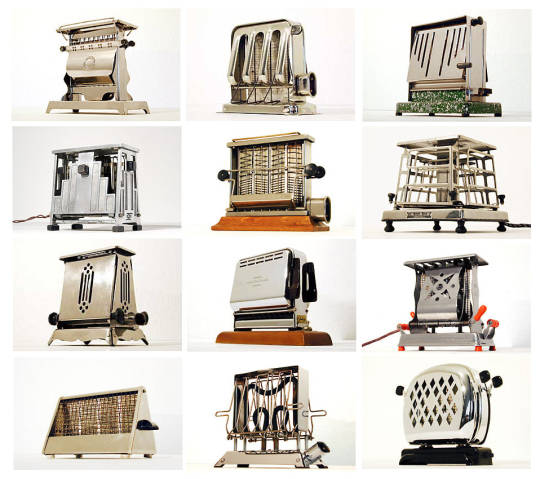
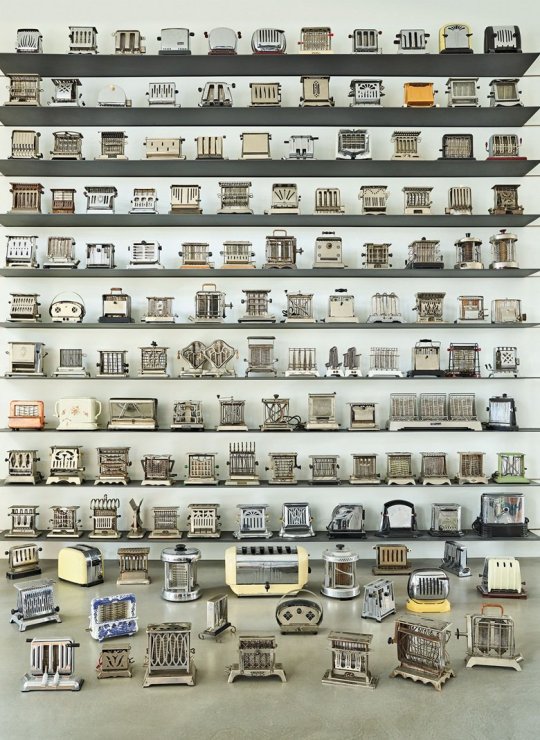
Did you know that there is a Toaster Museum????
#things organized neatly#present and correct#design#museum#toast#toaster#industrial design#chrome#wow#neat#love#food#Germany#archives#bread#history
7K notes
·
View notes
Text

Ella Hunt's Sue from Dickinson as Veronese's Vision of Saint Helena, a copy of which was owned by the real Sue and is on display in her Evergreens house. 🖼️ They finally opened up this house for tours in 2024 and it was fantastic. I didn't forget the historically accurate HEALTH lyrics. 🎹🥁 I learned on the tour that Sue lived alone for decades after Emily died, collected Catholic Medieval and Renaissance art and considered becoming a nun.

#sue dickinson#sue gilbert#dickinson#ella hunt#the vision of saint helena#dickinson apple tv#dickinson fanart#dickinson fan art#emily dickinson museum#paolo veronese#alena smith#art history#season 2 episode 8#s2e08#i'm nobody who are you#health band#industrial music#strange days#perioddramaedit
22 notes
·
View notes
Text
#i come at this with no agenda no not at all i definitely haven't written countless letters to MPs trying to save a similar museum no....#there's no reason i am tagging this#powerhouse museum#i could be thinking about any#museum#like#questacon#or the#Museum of Science and Industry#or maybe im thinking of#London Science Museum#it could be any#technology museum#or#science museum#It's going to be the Tumblr#Museum of Applied Arts and Sciences#and we will never let a CEO earn half a million a year while she denies funds for essential maintenance and strips out educational content#if i had more spots i would have added in one for the history of communications exhibit and#the Emergence of AI exhibit the old founding director proposed but as you can tell#i am very much grinding an axe right now
27 notes
·
View notes
Text





Innercity Industrial Scene by Virginia Cuthbert (1942)
9 notes
·
View notes
Text

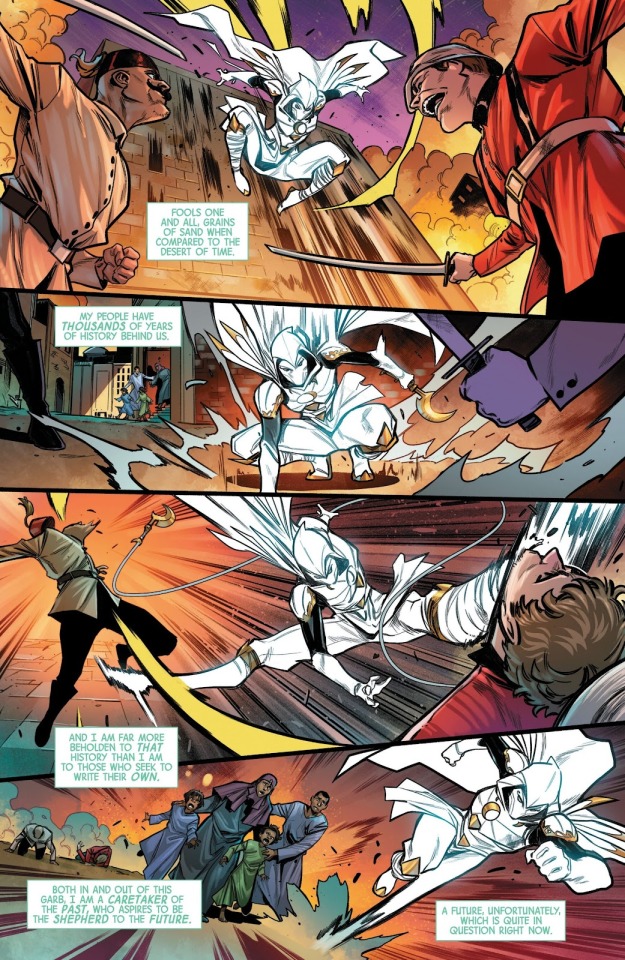
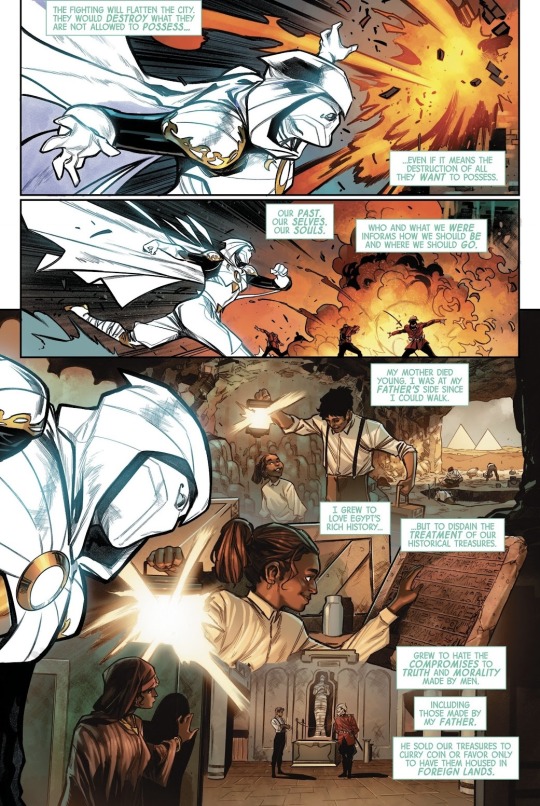
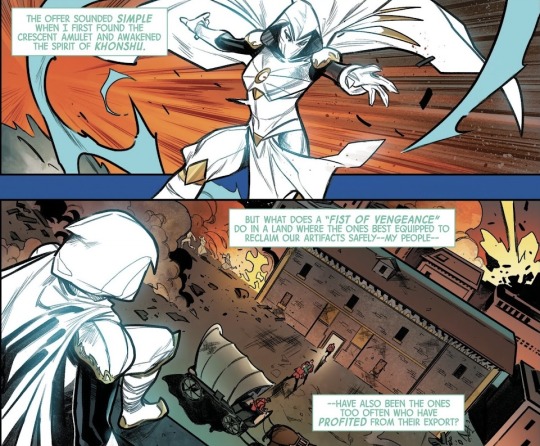
“For Now,” Phases of the Moon Knight (Vol. 1/2024), #4.
Writer: Fabian Nicieza; Penciler and Inker: Moisés Hidalgo; Colorist: Fer Sifuentes-Sujo; Letterer: Cory Petit
#Marvel#Marvel comics#Phases of the Moon Knight#Moon Knight comics#latest release#Moon Knight#Nakia Hunam#coming out swinging criticizing both the bourgeoisie AND populism is a bold choice#but gosh there’s just a lot of biting commentary here in general of both colonialism and the colonized#I refuse to dig and see what kind of wild takes people are making about this story but I can bet it’s made people uncomfortable#probably raised questions of who gets to make such criticism#because yeah we can all agree that colonial kidnapping of great artifacts is a travesty#cough cough the British Museum being the most infamous offender cough cough cough#but I have seen (not saying I endorse it) push back saying that by painting colonial powers as solely swooping in#and stealing artifacts negates the active role some members of the colonized population had in the industry#which some people feel is patronizing and creates an over-simplified view of history#other people still will push back against THAT by saying the economic power imbalance between colonized#and colonizer inevitably leads to the latter taking advantage of the former including in the archeological industry#I’ve seen some parallels with the environmental question#a colonizing power will come in and raze the land/extract wealth in minerals and ancient treasures#then a century later turn around criticize formerly colonized countries for clearing land for farming or trafficking artifacts#with some representatives of the latter saying «you ruined us now it’s our turn to try and do what we can to develop»#there’s also something there about formerly colonized countries with rich histories losing irreplaceable goods due to political instability#with a history of colonization not being able to be discounted as a major contributor to that instability#anyway it’s a tough topic and as per always please take my ramblings with the biggest grain of salt you’ve ever seen#what I do know is I would love for Nakia and Layla and Marlene (maybe even the Moon Knight What If..? version?) to have tea together
4 notes
·
View notes
Text
The curious case of the short-lived Combination Vender Company
By Jonathan Monfiletto

From furniture for stores and schools to carriages and buses to metal fixtures and more, the Penn Yan area has been the site of various industrial endeavors creating a variety of interesting products. One such venture was the Combination Vender Company, which was at one point located on Water Street in the building that is now the site of Water Street Wines & Spirits.
Though it seems to have begun with promise, the Combination Vender Company also seems to have come in like lion – putting out a roaring good product for the Yates County area and beyond – and seems to have gone out like a lion too, with a ferocious argument between the company’s founders. The Yates County Chronicle of August 31, 1904 features the first reference to the Combination Vender Company in a Yates County newspaper, though it is unclear when the company started. That edition of the Chronicle notes Combination Vender recently moved from the Commercial Iron Works, located on Commercial Avenue in the Lake Street corridor after the 1872 Jacob Street fire, to a building on Water Street owned by C.H. Conklin.
A few months later, on February 8, 1905, the Chronicle carried an article titled “Penn Yan’s New Industry” and subtitled “Davis Brothers and F.B. Townsend Doing a Rushing Business on Water Street.” The article describes Combination Vender as a new industry that opened on Water Street after beginning in Beebe’s carriage factory the summer before. The Water Street building had previously been occupied by the Penn Yan Wine Company but now was the home of a firm managed by brothers Jacob and Lewis Davis and Frank Townsend, who invented the machine the company patented on October 25, 1904 and produced in its factory.
Though newspaper accounts call the machine a slot machine, it wasn’t something you would see in a casino even though in practice it might work that way. In essence, the machine was – as the company’s name suggests – a vending machine. According to the Chronicle, the vending machines had four compartments to carry four different commodities, such as candies and peanuts and more. Items cost one cent each, so a person put in their penny and chose the item they wanted. The machine received the penny and carried it back to the drawer and retained it. Then, the desired item fell through the opening into the hand of the person.
Interestingly, the machine also had a magnet that attracted steel or iron or tin and thus prevented fraudulent coins from being used to obtain items. Since a penny is made from brass and not magnetic, it moved through the machine as intended.
At the time of the 1905 article, the company employed 13 people and and had 1,000 machines ready for shipment, with a total of 3,000 or more orders. The Chronicle detailed the company’s process for making the machines on Water Street: On the first floor, oak woodwork for the machines was cut to the right size by circular saws and into the right shape by a machine carrying different knives. Then, the wood was smoothed and polished by a revolving wheel. On the second floor, the iron and brass were prepared, with the iron cut into shape by metal dies. On the third floor, the machines were put together, varnished, and prepared for sale. At that point, every part of the machines was made on Water Street except for the enameled iron front – made by the Lisk works in Canandaigua – and one little casting made in Buffalo.
Combination Vender had moved to Water Street in 1904 to “largely increase its capacity,” according to the Chronicle, and indeed by the end 1905 the company was reported to employ “fifteen or sixteen men” and its machine was touted as “one of the best on the market and … finding a ready sale in all parts of the United States.” The company incorporated in early 1906 with a capital stock of $100,000, with the Davis brothers and Townsend among the directors. “These gentlemen have an excellent invention, a money maker, and are to be congratulated,” the Chronicle said.
In December 1908, the Combination Vender building was the victim of an apparent arsonist in the Penn Yan business district. The engine room, where the fire ignited, and another small building were significantly damaged, and the building sustained water damage. However, a little more than a year later, in the first Chronicle edition of 1910, an article headlined “Prospering Industries” highlighted Combination Vender along with other industries and interests throughout Penn Yan and Yates County. the sub-headlines boasted, “Penn Yan’s Factories and Mills Show Marked Progress During 1909,” “Railroads Show Increase Over 1908,” and “Northern Central Business for November and December Gains $14,200. Factories Nearly all Busy. Outlook for 1910 Very Promising in all Industries.”
For the article, Combination Vender reported an increase in business from 1908 to 1909 and had “every reason to be assured of a prosperous year in 1910,” with no decrease in its workforce during the winter despite such a cut being the rule in similar factories. “This firm has a great deal of competition to meet, but its machines are satisfactory and increased business naturally follows,” the article states.
However prosperous 1910 may been for Combination Vender, 1911 appeared to usher in the downfall of the company. On May 31, the Chronicle reported the factory was shut down and the employees put on vacation because of strained relations between Townsend, the company secretary, and Jacob Davis, the company treasurer. Davis had apparently fired Townsend, giving the secretary “a notice that his services were no longer required,” but Townsend refused to stop working. Davis delivered Townsend another notice, this time accompanied by a witness, yet Townsend still refused to quit. Townsend stated his firing by the treasurer required the consent of the board of directors.
Davis called a meeting of the board of directors, which voted to discharge Townsend. The secretary still refused to step down, claiming the notice of the meeting must specify its purpose. With the factory slated to reopen the following week, Townsend said he would be there while Davis said Townsend would not be allowed to work and the factory would be closed again if needed. It was noted Davis held the majority of shares in the company, while Townsend was a stockholder and was also superintendent of the factory for some time.
The Penn Yan Democrat of June 9, 1911 sheds more light on Townsend’s side of the argument, stating the secretary had asked the treasurer for a sworn statement of the condition of the company but Davis failed to do so. While Townsend said he made the request in writing that March, Davis said he had no recollection of it other than presenting a statement to the board and giving it to Townsend to examine. However, at that meeting, Townsend said he asked Davis to swear to the statement, but Davis would swear only to part of it. This argument apparently led to Davis seeking to fire Townsend.
According to the Democrat, Townsend sought a penalty for Davis for his violating a law that requires the treasurer of a company or corporation to render a sworn statement under certain conditions. Townsend also sought back payment for his prior work for the company. Indeed, Townsend filed a lawsuit against Davis for the violation of corporation law. The presiding judge dismissed the action, however, stating Townsend, as a director of the company, had “every opportunity to acquaint himself with the financial standing of the company,” the Chronicle stated on December 13, 1911.
As reported by the Chronicle on June 4, 1913, the Appellate Division ordered a retrial, with this time the jury deciding the case in favor of Townsend and the presiding judge awarding $680 (equivalent to $21,298 in 2023 dollars) to Townsend as a penalty to Davis. This verdict appeared to ring the death knell for Combination Vendor.
On January 9, 1914, the Democrat reported a man was looking for a suitable building to manufacture gas fixtures, and one place under consideration was “the brick building on Water Street until recently occupied by the Combination Vender Company, this company having moved into the adjoining wooden building,” formerly occupied by Sanderson’s coal office. A year later, on January 15, 1915, the Democrat reported a fire destroyed the three floors of the Combination Vender building. Baldwin’s Bank owned the building and had it insured for $3,000, while Davis had the machinery and company stock insured for $8,000.
The last mention of the Combination Vender Company in Yates County newspapers came on December 3,1924, when the Chronicle reported a fire at Clumm’s Accessory Store – apparently located in the wooden building once the home of Combination Vender – in which 500 of Combination Vender’s machines were destroyed. Davis, then living on Rochester, stored the machines there until they could be distributed in nearby areas, and some of the machines were recently purchased by a Rochester man. Instead, “all of these, charred by the fire and soaked with water, were dumped down through the two stories to the ground floor,” the Chronicle wrote.
#historyblog#history#museum#archives#us history#american history#local history#newyork#yatescounty#pennyan#business#manufacturing#industry#building#vendingmachine#slotmachine#combinationvenderco
3 notes
·
View notes
Text
Showed my mum around to some of our working class industrial history and took some cool pictures while at it










2 notes
·
View notes
Text

#idis' originals#photography#dark academia#light academia#romantic academia#academia aesthetic#academic aesthetic#urban life#urban landscape#gothenburg#göteborg#dark academia aesthetic#museum#interiors#antique#history#art#portrait#industrial
7 notes
·
View notes
Video
Fort McHenry - Baltimore, Maryland. by Kevin B. Moore
#baltimore#baltimore museum of industry#bmi#domino sugars#fort mchenry#history#maryland#museum#urban#brick#masonry#fort#mchenry#light#dark#war#1812#battle#baltimoreharbor#low light#flickr
3 notes
·
View notes
Text

A selection of photos and video clips from my recent visit to Blists Hill Victorian Town for their Heavy Horse Weekend, which saw a selection of wagons pulled by magnificent shire horses traversing the site, in addition to a horse bus giving rides to visitors, a wagon tyring demonstration, and opportunities to pet and guid the shire horses.
See the full footage compilation on YouTube.
#Blists Hill Victorian Town#Heavy Horse Weekend#shire horse#horse-drawn wagon#Victorian Era#England#Great Britain#history#heritage#working history#open air museum#Ironbridge George Museum Trust#event#historical demonstration#Creative Commons#Stook Video#historical photography#Michael's Mission#industrial town#dray#brewery wagon#industrial history
2 notes
·
View notes
Text
I want this to be reblogged to shit so that the famous people see it:
Metal, punk, and rock bands: what will it take to get yall to visit us at our museum. I want to know. I need to know what it will take to get a picture with you guys and tell you cool facts.
8 notes
·
View notes
Text

DON'T LAUGH!!!! I AM SO EXCITED TO SEE BETHLEHEM STEEL AND A BUNCH OF #FORGOTTENNINETIESBANDS
13 notes
·
View notes
Text
"The artworks in the museum’s care offer the keys to understanding who we are as living Native communities, and they highlight the ways in which Native people have thrived on this continent since time immemorial."
#Art#Art News#Art History#Indigenous Art#native art#native american#indigenous#brooklyn museum of art#New York#art industry
3 notes
·
View notes
Text



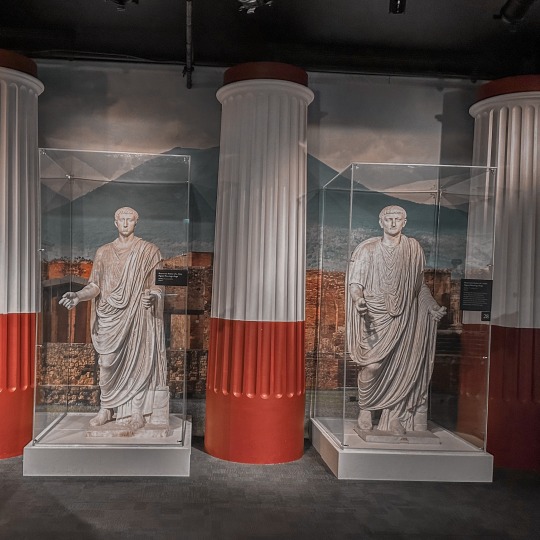
that is the paradox of archeology; you read the past best in its moment of trauma
pompeii exhibit; museum of science and industry
#history#pompeii exhibit#pompeii#ancient rome#volcano#vesuvius#vesuvius eruption#volcanic#dark academism#chaotic academic aesthetic#student#museum#museum of science and industry#chicago#chicago museums
6 notes
·
View notes
Text



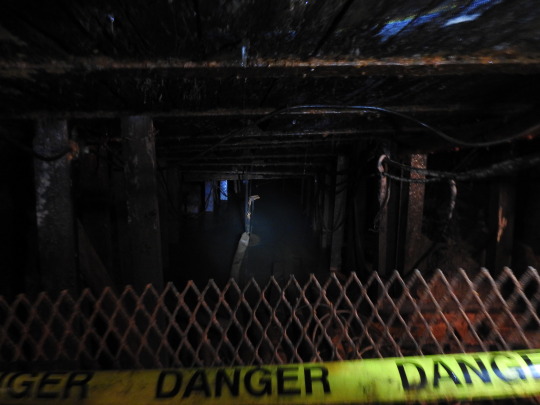


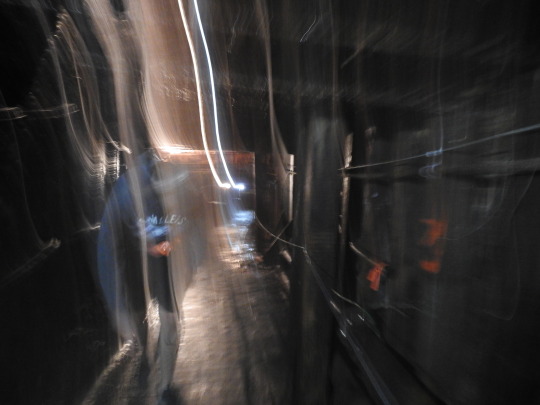



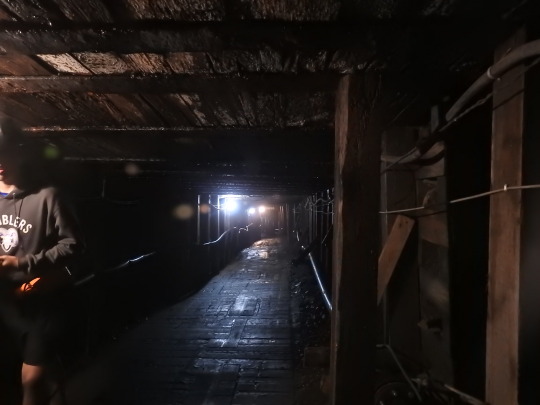

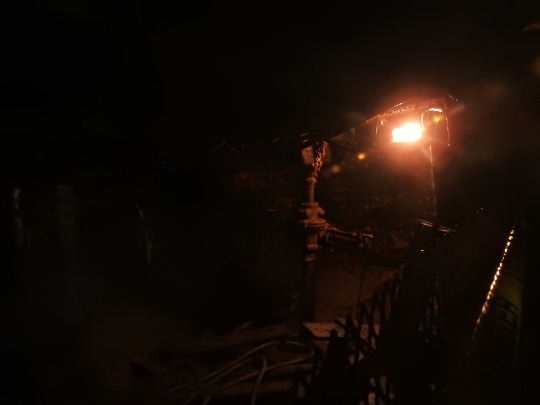



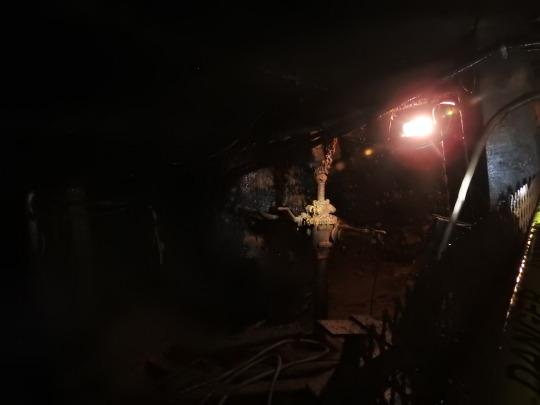


Springhill Miners' Museum - Nova Scotia
#photography#springhill#coal#mine#miners#mining#infrastructure#abandoned#submerged#claustrophobia#flooded#museum#unsettling#labor#labor history#(The museum isn't abandoned it's very cool and you should visit if you're ever in the area)#industrial#canada#nova scotia#maritimes#dark
5 notes
·
View notes